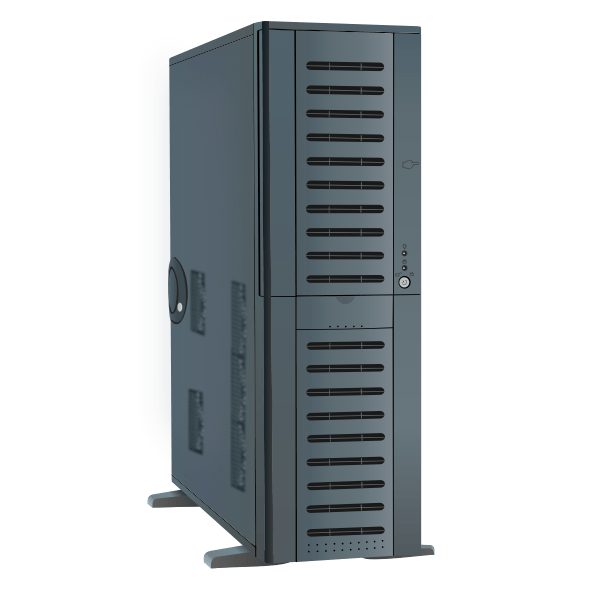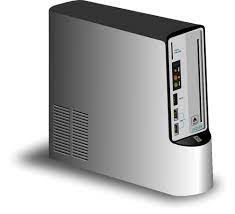Computer cabinets
Computer cabinets contain the necessary components to run computer systems efficiently and with fewer errors. Inside the case are various things including motherboards, memory chips, cables, processors, connectors, etc.
Definepedia
Types of Computer Cabinet
Cabinets come in a variety of sizes, colors and styles and may contain baffles and fans to facilitate cooling and minimize recycled and bypass airflow. Here are few famous CPU CABINET :
- Full Tower
- Mid Tower
- Mini Tower
- HTPC & SFF Tower
Full Tower

Firstly, Full Tower is used to house an E-ATX or CEB motherboard. It may have from four to nine 5.25-inch bays (for added optical drive). Allows you to put in as much as seven growth cards, inclusive of a valid card or a receiver.
A major disadvantage of a full tower is that it takes up a lot of space and is difficult to hide. However, if you have free disk space you don’t really need it, then Full Tower might be the best option for your PC.
Advantages:
- Large space for high-end components, including multiple GPUs and large motherboards.
- Excellent airflow and ventilation due to the larger size, reducing the risk of overheating.
- Supports multiple drive bays for extensive storage options.
- Easier cable management due to the spacious interior.
- Suitable for enthusiasts and gamers who need extensive customization.
Disadvantages:
- Bulky and takes up more space.
- More expensive than smaller options.
- May not be practical for users with basic computing needs.
Mid Tower
The mid-tower or ATX form factor is the most popular and widely used computer case, which allows you to use many drives and almost all types of motherboards with acceptable overall dimensions.
The average full-tower is between 35 and 55 cm high and 15 to 25 cm wide. Inside the mid-tower case, there is more than enough space to install full-size components, such as e.g.
For example, the largest graphics cards are over 300mm long, and this case can support 120, 140 or even 200mm fans for a positive air cooling effect.
There is another big problem with the installation. Since there is hardly any air to breathe, the repair work becomes time-consuming and expensive. It can also damage internal hardware.
Advantages:
- A balance between size and space, suitable for most gaming and performance-oriented builds.
- Offers good airflow and cooling options, though not as extensive as a full tower.
- Slightly more affordable compared to full towers.
- Adequate space for most components and expandability.
Disadvantages:
- May be restrictive for some high-end configurations with multiple GPUs.
- Limited storage space compared to full towers.
- Cable management can be challenging in some mid tower cases.
Mini Tower

These kinds of pc instances are designed to take in as little bodily area and with out putting in decent-sized photos cards. The common mini-tower duration levels among 30 – forty five cm tall and 15 – 25 cm in width (they could from time to time be smaller).
Their thermal enclosures aren’t the exceptional at the market, so it’s far greater handy so one can set up low-intake additives in preference to high-intake ones.
The Mini Tower chassis is the smallest in length and now no longer very famous amongst pc assemblers because of the constrained volume, which does now no longer permit meeting of a greater or much less effective pc and coffee airflow.
Mini Towers are an increasingly common choice for regular home PCs – both budget and enough for standard video games. Regarding their possible uses, given their limited size and expansion capabilities, their benefits are quite limited.
However, during assembly, only a specialist or experienced can beautifully arrange everything in its place as there is not much space inside.
Advantages
- Compact and space-saving, ideal for smaller desk setups or limited spaces.
- More affordable than larger options.
- Energy-efficient, as it requires lower cooling demands.
- Suitable for basic computing, office tasks, and casual gaming.
Disadvantages
- Limited space for components and expansion.
- May not accommodate high-end GPUs or multiple drives.
- Can have limited airflow, leading to higher temperatures.
HTPC Tower
HTPC stands ‘Home theatre PC’ for and SFF stands for ‘Small Form Factor‘. And the computing power of this is more enough to play music and video in any modern format.
HTPC is the perfect choice for the computer at your home multimedia entertainment. You can place it under the TV table, or even you can hang on the wall. And the computing power of this is more enough to play music and video in any modern format.
Advantages
- Designed for home theater setups, compact and aesthetically appealing.
- Can be easily integrated into entertainment centers.
- Ideal for media streaming and light gaming.
- Energy-efficient and often silent in operation.
Disadvantages:
- Severely limited space for components, only suitable for low-power CPUs and integrated GPUs.
- Limited cooling options may lead to higher temperatures.
- Challenging to upgrade due to the compact design.
Quiz
[quiz-cat id=”3801″]
Leave a Reply